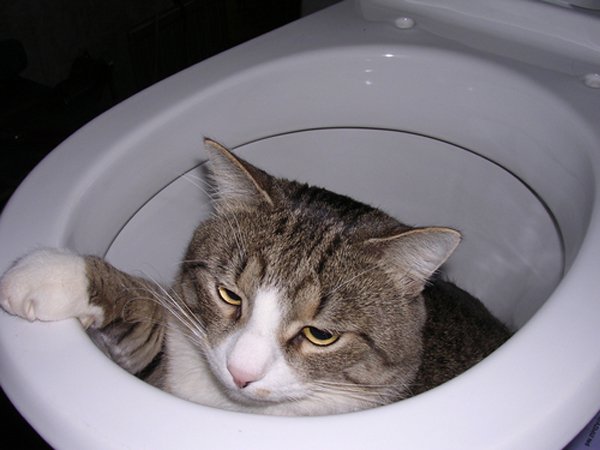Reasons Flushing Cat Poop Down Your Toilet May Cause Problems - Tips for Safe Disposal
Reasons Flushing Cat Poop Down Your Toilet May Cause Problems - Tips for Safe Disposal
Blog Article
Listed here in the next paragraph you can locate lots of worthwhile answers concerning Can You Flush Cat Poo or Litter Down the Toilet?.

Introduction
As cat proprietors, it's vital to bear in mind how we get rid of our feline close friends' waste. While it may seem convenient to flush pet cat poop down the commode, this method can have harmful repercussions for both the atmosphere and human health and wellness.
Ecological Impact
Flushing feline poop presents dangerous microorganisms and bloodsuckers into the supply of water, posturing a significant threat to water communities. These pollutants can negatively impact marine life and compromise water high quality.
Health and wellness Risks
Along with ecological worries, flushing feline waste can also position health threats to humans. Feline feces might contain Toxoplasma gondii, a bloodsucker that can create toxoplasmosis-- a possibly extreme health problem, specifically for pregnant women and people with damaged body immune systems.
Alternatives to Flushing
Luckily, there are more secure and a lot more accountable methods to dispose of cat poop. Think about the following choices:
1. Scoop and Dispose in Trash
The most common approach of dealing with cat poop is to scoop it into an eco-friendly bag and throw it in the trash. Make sure to use a specialized litter inside story and take care of the waste promptly.
2. Usage Biodegradable Litter
Go with eco-friendly pet cat litter made from materials such as corn or wheat. These litters are environmentally friendly and can be securely taken care of in the garbage.
3. Hide in the Yard
If you have a lawn, consider hiding cat waste in a designated location away from vegetable yards and water resources. Make certain to dig deep sufficient to avoid contamination of groundwater.
4. Install a Pet Waste Disposal System
Invest in an animal garbage disposal system especially developed for cat waste. These systems utilize enzymes to break down the waste, decreasing smell and ecological impact.
Final thought
Liable family pet ownership expands beyond supplying food and shelter-- it likewise entails proper waste administration. By avoiding flushing pet cat poop down the bathroom and selecting alternate disposal methods, we can minimize our ecological impact and secure human health.
Why Can’t I Flush Cat Poop?
It Spreads a Parasite
Cats are frequently infected with a parasite called toxoplasma gondii. The parasite causes an infection called toxoplasmosis. It is usually harmless to cats. The parasite only uses cat poop as a host for its eggs. Otherwise, the cat’s immune system usually keeps the infection at low enough levels to maintain its own health. But it does not stop the develop of eggs. These eggs are tiny and surprisingly tough. They may survive for a year before they begin to grow. But that’s the problem.
Our wastewater system is not designed to deal with toxoplasmosis eggs. Instead, most eggs will flush from your toilet into sewers and wastewater management plants. After the sewage is treated for many other harmful things in it, it is typically released into local rivers, lakes, or oceans. Here, the toxoplasmosis eggs can find new hosts, including starfish, crabs, otters, and many other wildlife. For many, this is a significant risk to their health. Toxoplasmosis can also end up infecting water sources that are important for agriculture, which means our deer, pigs, and sheep can get infected too.
Is There Risk to Humans?
There can be a risk to human life from flushing cat poop down the toilet. If you do so, the parasites from your cat’s poop can end up in shellfish, game animals, or livestock. If this meat is then served raw or undercooked, the people who eat it can get sick.
In fact, according to the CDC, 40 million people in the United States are infected with toxoplasma gondii. They get it from exposure to infected seafood, or from some kind of cat poop contamination, like drinking from a stream that is contaminated or touching anything that has come into contact with cat poop. That includes just cleaning a cat litter box.
Most people who get infected with these parasites will not develop any symptoms. However, for pregnant women or for those with compromised immune systems, the parasite can cause severe health problems.
How to Handle Cat Poop
The best way to handle cat poop is actually to clean the box more often. The eggs that the parasite sheds will not become active until one to five days after the cat poops. That means that if you clean daily, you’re much less likely to come into direct contact with infectious eggs.
That said, always dispose of cat poop in the garbage and not down the toilet. Wash your hands before and after you clean the litter box, and bring the bag of poop right outside to your garbage bins.
https://trenchlesssolutionsusa.com/why-cant-i-flush-cat-poop/

Hopefully you liked our section about Don’t flush cat feces down the toilet. Thanks a ton for taking the time to browse our blog. Enjoyed our content? Please share it. Let another person locate it. Many thanks for taking the time to read it.
Book Appointment Now Report this page